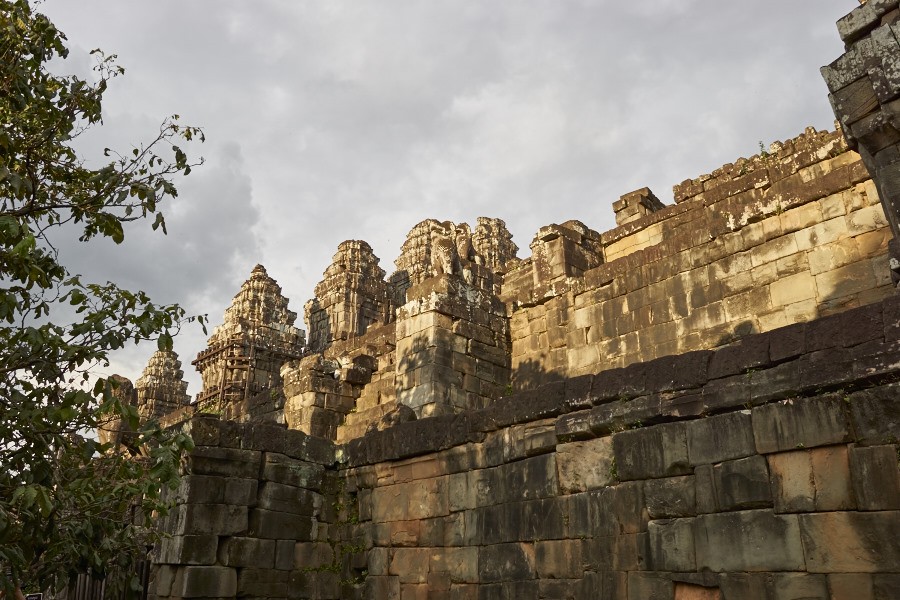
The setting sun on Phnom Bakheng, Siem Reap, Cambodia
In the first week of October 2015, after becoming wonderfully married (woohoo!), I finally journeyed to a part of the world that was an influencing factor on my masters' thesis six years ago: the ruined temples and cities of the Khmer Empire. It was certainly more impressive in person than any kind of dramatization that you may have seen in film, and it also spoke volumes of just how little is known about this lost civilization. The few cultural remains of the empire only show statues and bas-reliefs of everyday life -- or otherwise parades of Chinese soldiers -- but I would have wanted to see depications of the colors of their dress or what foods they ate. Modern Khmer cuisine, I will say, is profoundly delicious.
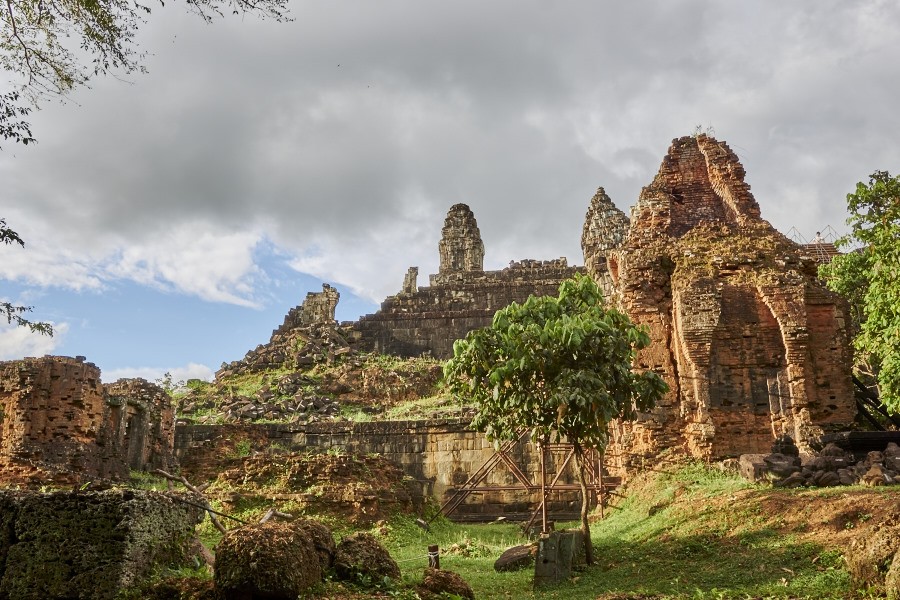
The setting sun on Phnom Bakheng
The guidebook that we used to visit the temples, Focusing on the Angkor Temples, Third Edition, by Michel Petrotchenko was actually not available for purchase in China. It is an excellent guidebook, however, as it had hundreds of images and detailed architectural plans of the temples. I would highly recommend getting a copy; they are available for purchase (US$23) in Cambodia such as in the National Museum in Phnom Penh.
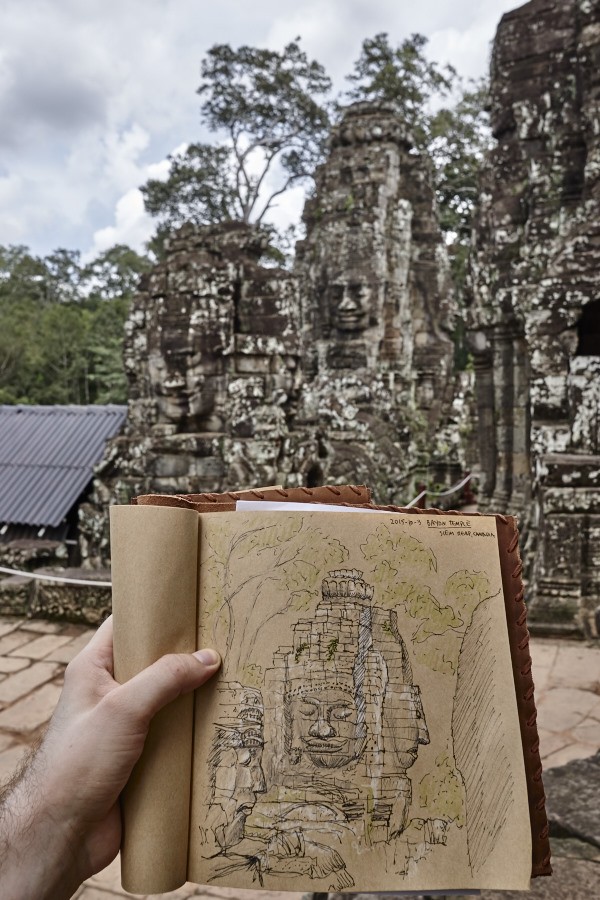
Sketching The Bayon
Going about the ruins I often felt like a humble adventurer or a visitor to a tomb of ancient people, always in awe yet never quite understanding everything I was witnessing and experiencing. In fact, I should revise that statement to say that I understood a tiny amount of what I was seeing -- from a cultural and historical point of view, of course.
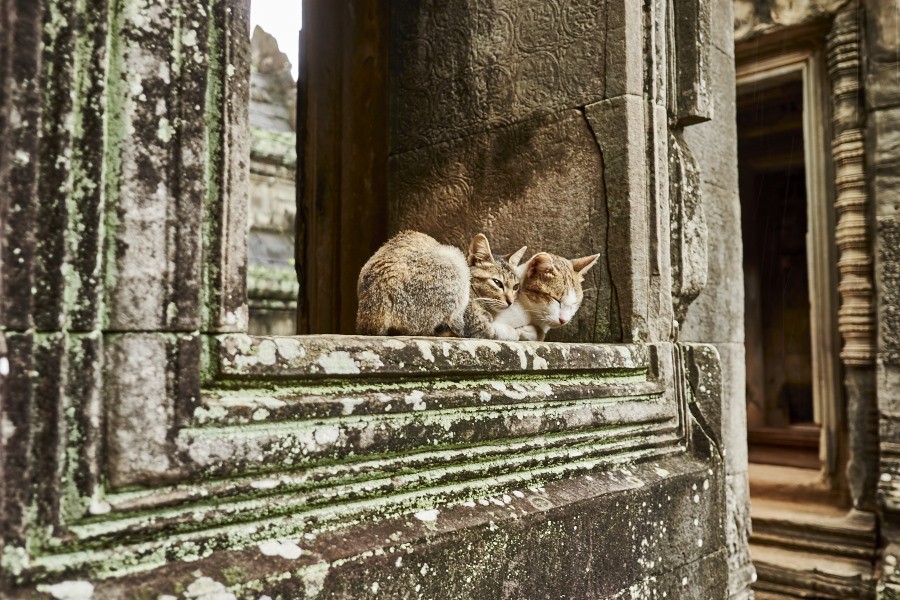
A pair of cats hiding away from the rain in Banteay Samre.
The weather was favorable during the time we visited; it's not recommended to travel to Cambodia in the month of October with the rainy season about to end. For the most part we were not rained out on any tour except for a truncated tour of Pre Rup and East Mebon. And that led a certain mesmerizing atmosphere to East Mebon while it was raining. It could be said that all the different temples we visited had their own magic, so I think I will post some images in some forthcoming posts...
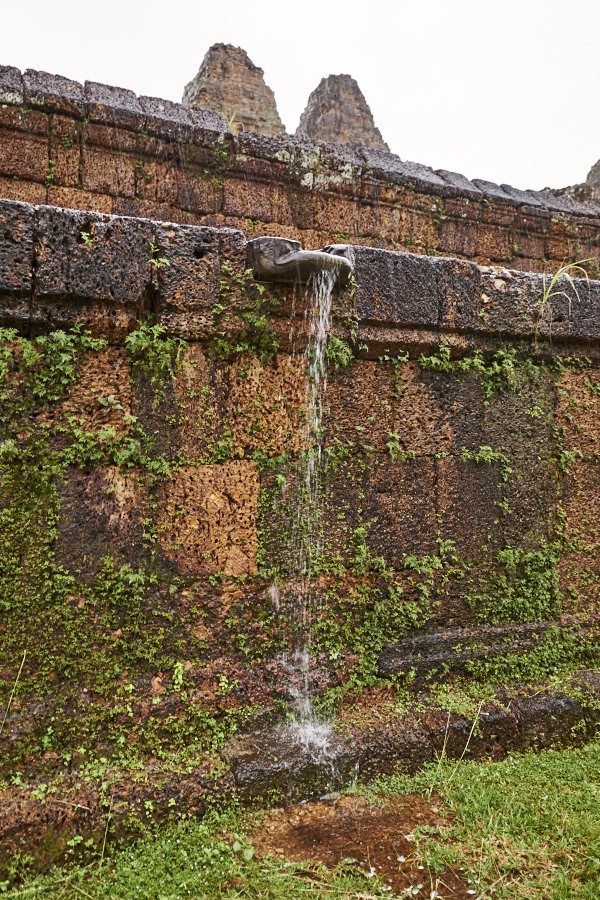
The rain in East Mebon, with detail of the trench drain lion spout and moss covered laterite wall.